Goleta Valley Historical Society
Stewards of Rancho La Patera & Stow House
Est.1872
Welcome to the Ranch Yard of Rancho La Patera!
The arrangement of farm equipment from left to right in the ranch yard is intended to generally reflect the annual crop cycle, from preparing the ground through harvest. The equipment on display was used from the late 1800s to the mid-1900s.
Click here for more on the Farming and Ranching Process!
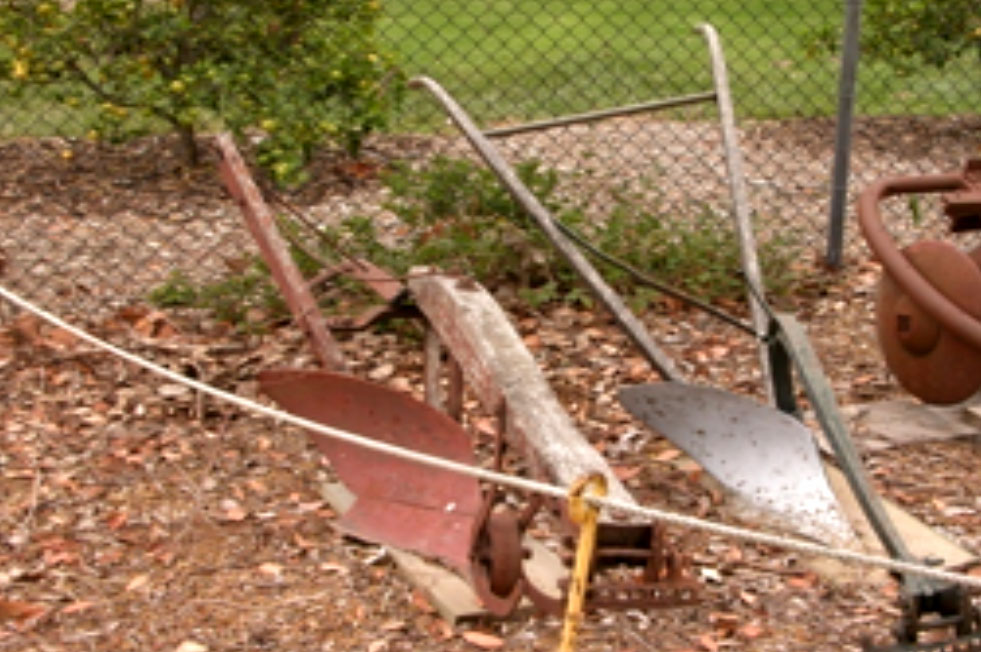
PLOWS
In the spring, plows were used to turn over the soil as an early step in preparing the seedbed. In the machine age, the plow became a large machine with five blades, called a five-bottom plow. Today farmers often use discs that do not penetrate the soil as deeply as a plow. This helps prevent soil erosion.
More on PLOWS!
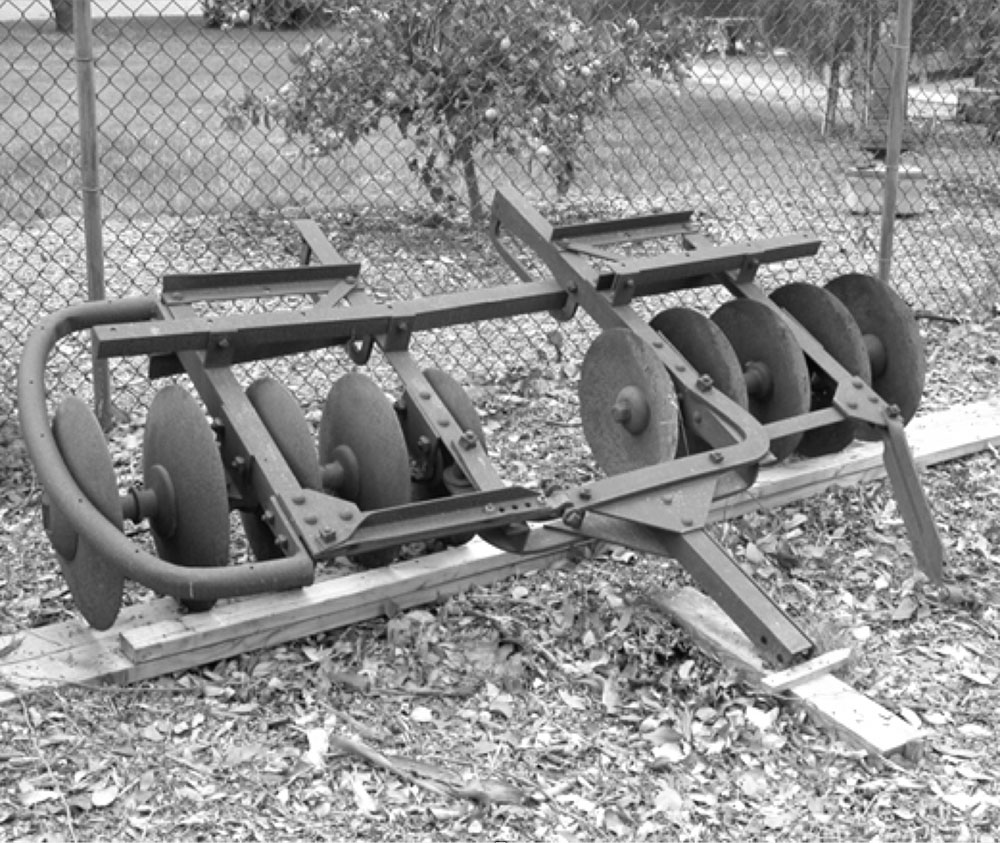
DISC PLOWS
Disc plows turned over the dirt, but left the soil connected. The disc’s blades cut the soil into chunks the size of a person’s fist. This disc plow was used locally on the Pomatto Ranch.
More on DISC PLOWS!
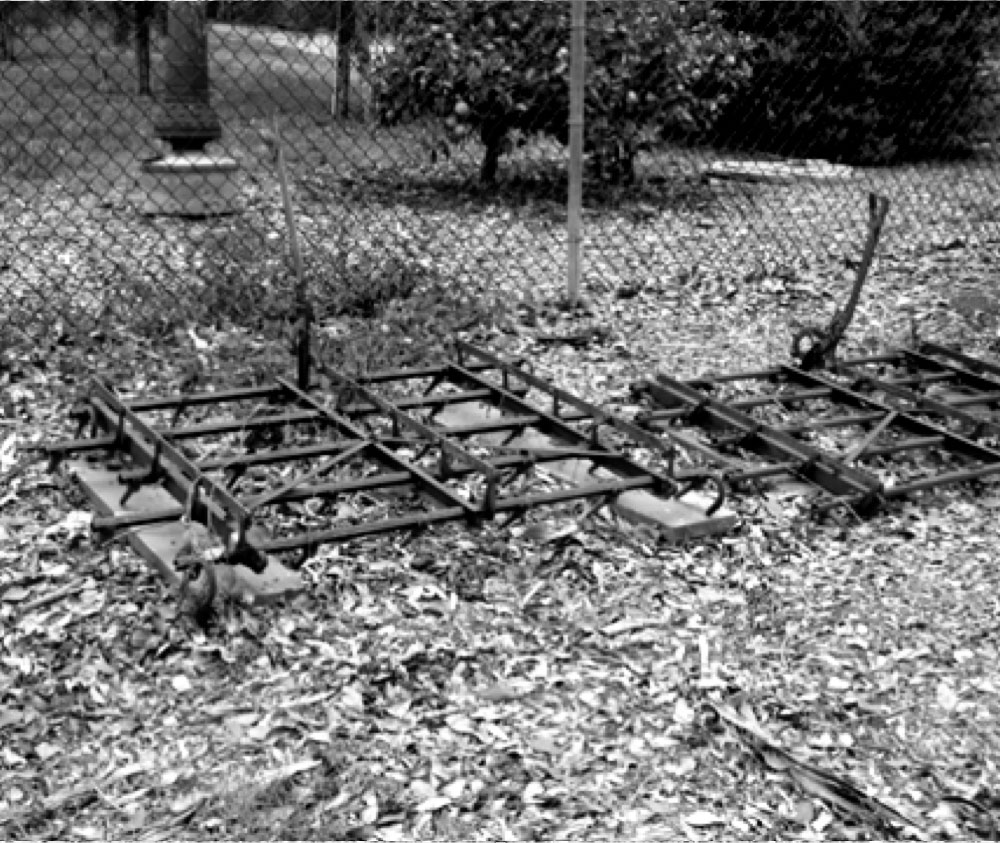
HARROW
With its many tines, the harrow left the soil fully broken up and smooth. This would result in a desirable seedbed. This harrow was used locally on the Pomatto Ranch.
More on HARROWS!
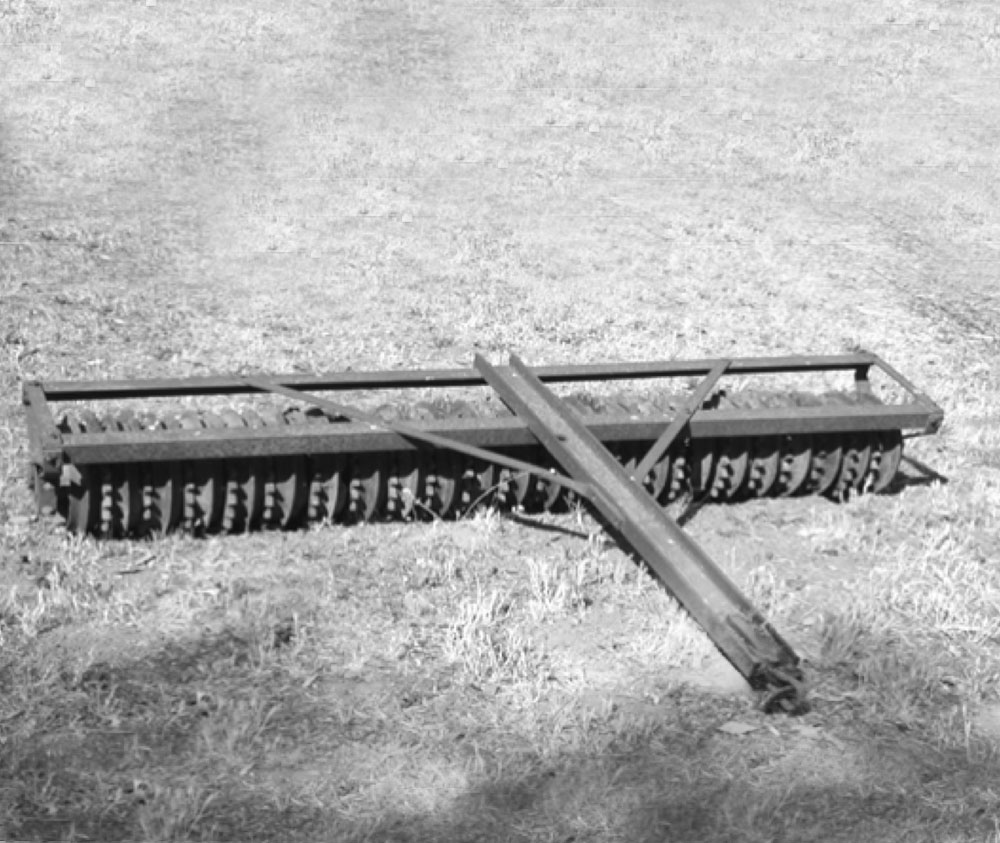
CULTIPACKER
The cultipacker was the last implement used before planting seeds. It was used when the soil tended to be clay and the harrow did not completely break down the clods of dirt. If the soil was pulverized and packed, the cultipacker allowed seeds to make a better connection to the soil. It also allowed water to contact the seed through capillary action. This increased the chance of germination.
More on CULTIPACKERS!
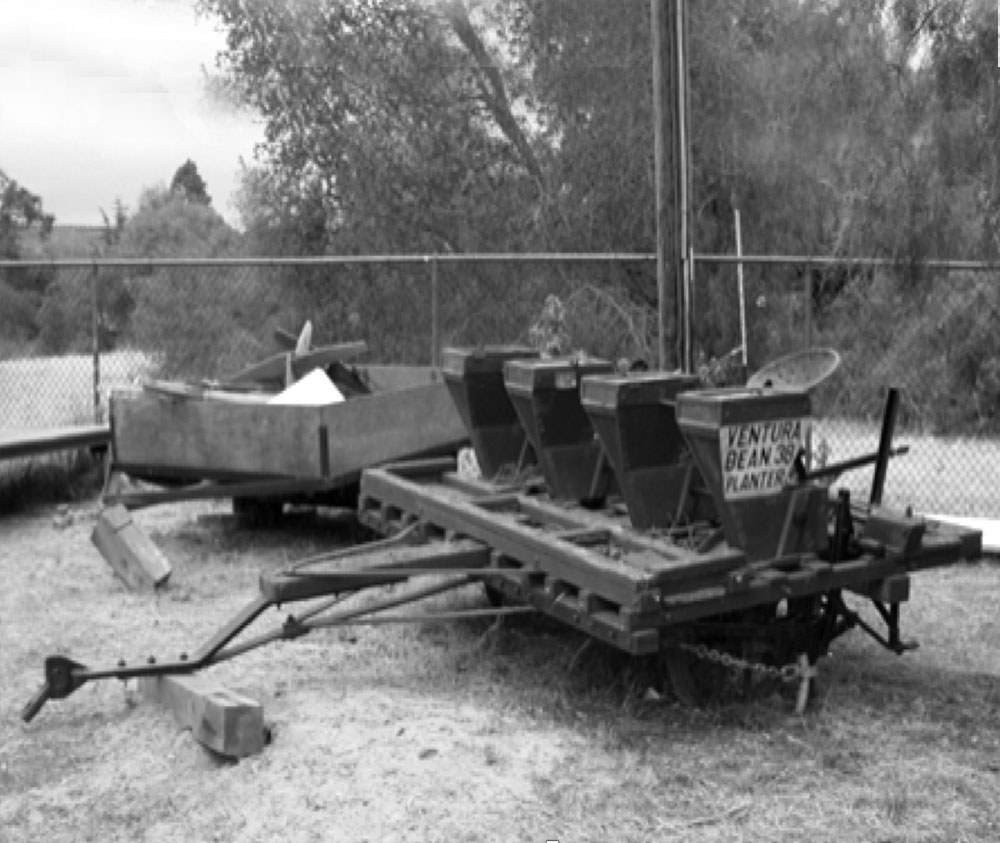
BEAN SEEDER
With the soil prepared for seeding, another machine was used to seed the soil. This is a lima bean seeder. Seeders were also developed specifically for corn, hay and oats.
More on SEEDERS!
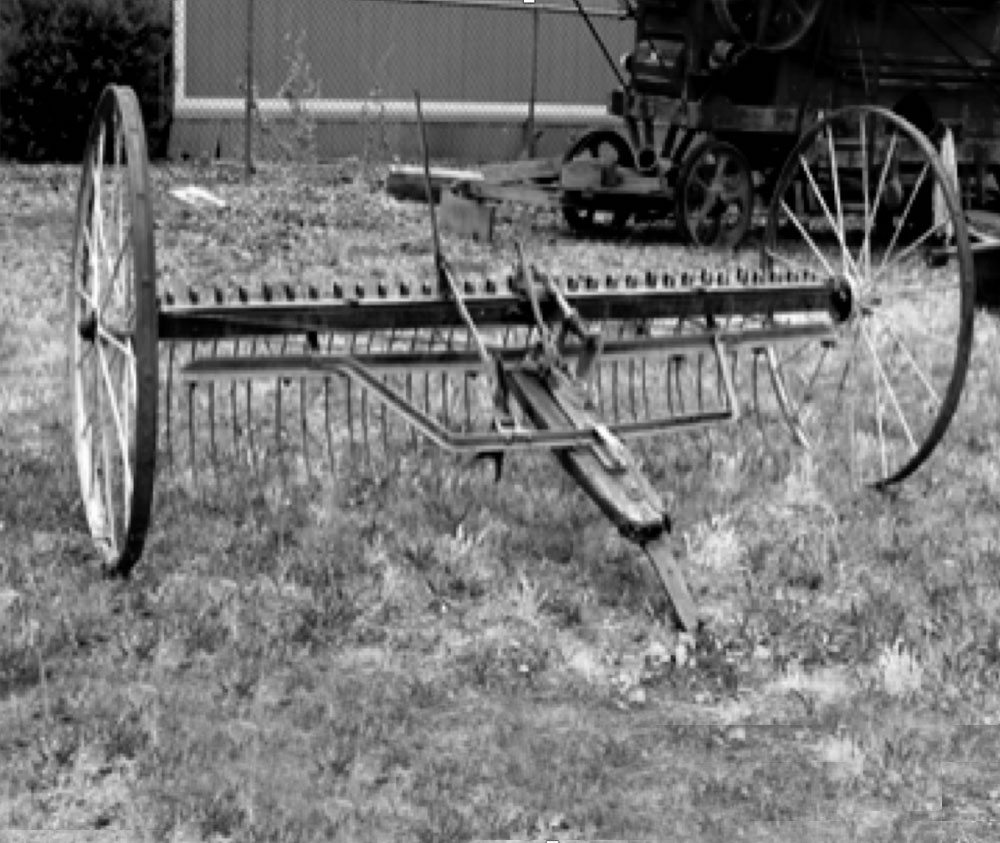
RAKE
After the crops were cut, the rake was used to make long piles of hay or grain. The rows of hay or grain were then loaded onto a wagon. In later years, crops were taken up by a baler. This machine picked up the hay and made bales in one operation. Once the crops were loaded onto a wagon, they were driven to a thresher where the beans were removed from the dried pod and stalk.
More on RAKES!
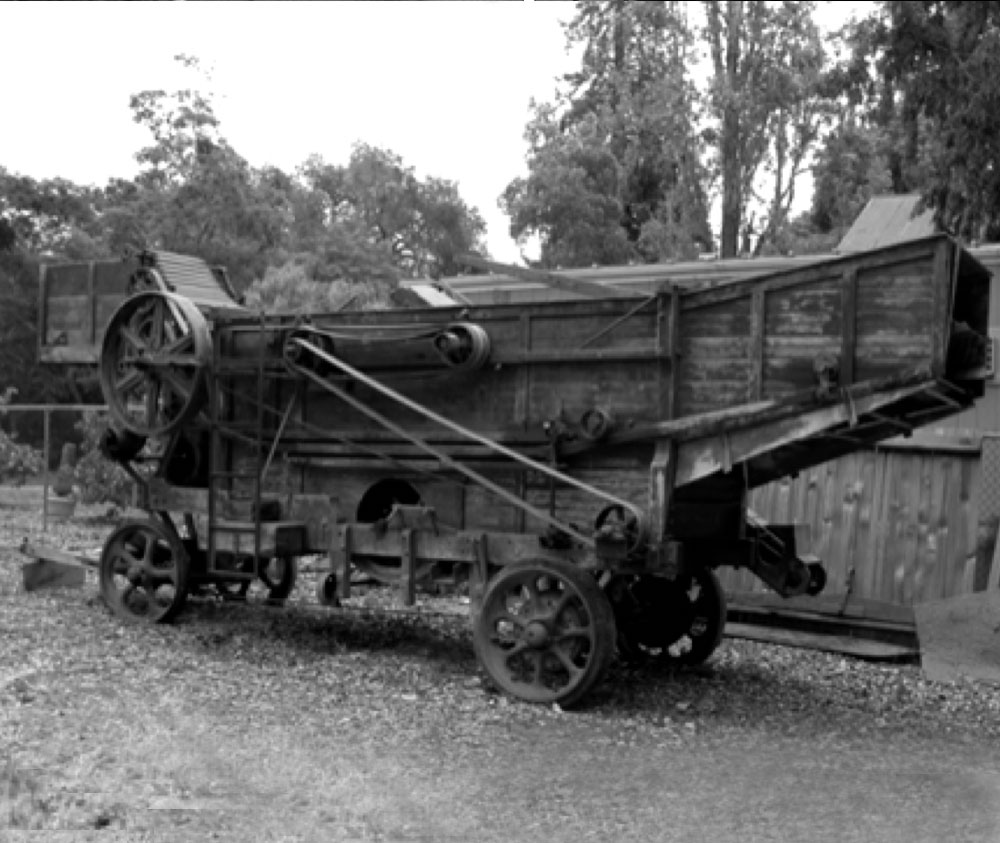
BEAN THRESHER
The job of the threshing machine was to separate the beans or grain from the stalk and pod. This thresher is set up for beans. The threshing operation produced grain and chaff. The chaff was used for animal bedding. It was spread around the animals’ pens and stables and absorbed the animal waste. It was then gathered, and the manure was used in the fields as fertilizer. The re-use of the animal waste products was an example of conservation by the farmers. This thresher was manufactured by Ventura Manufacturing Co and used on the Miratti Ranch until 1958.
More on BEAN THRESHERS!
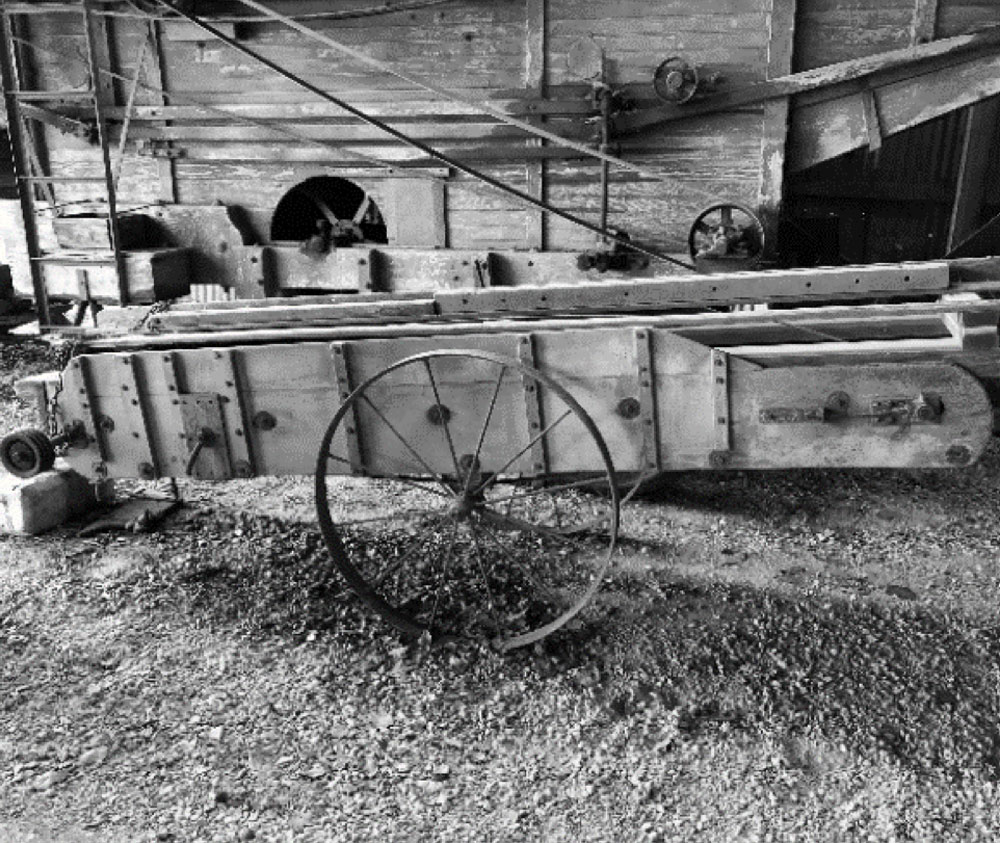
LOADER
This machine was used to load beans onto the wagons so they could be taken from the field to the thresher.
More on WAGONS AND TRACTORS!
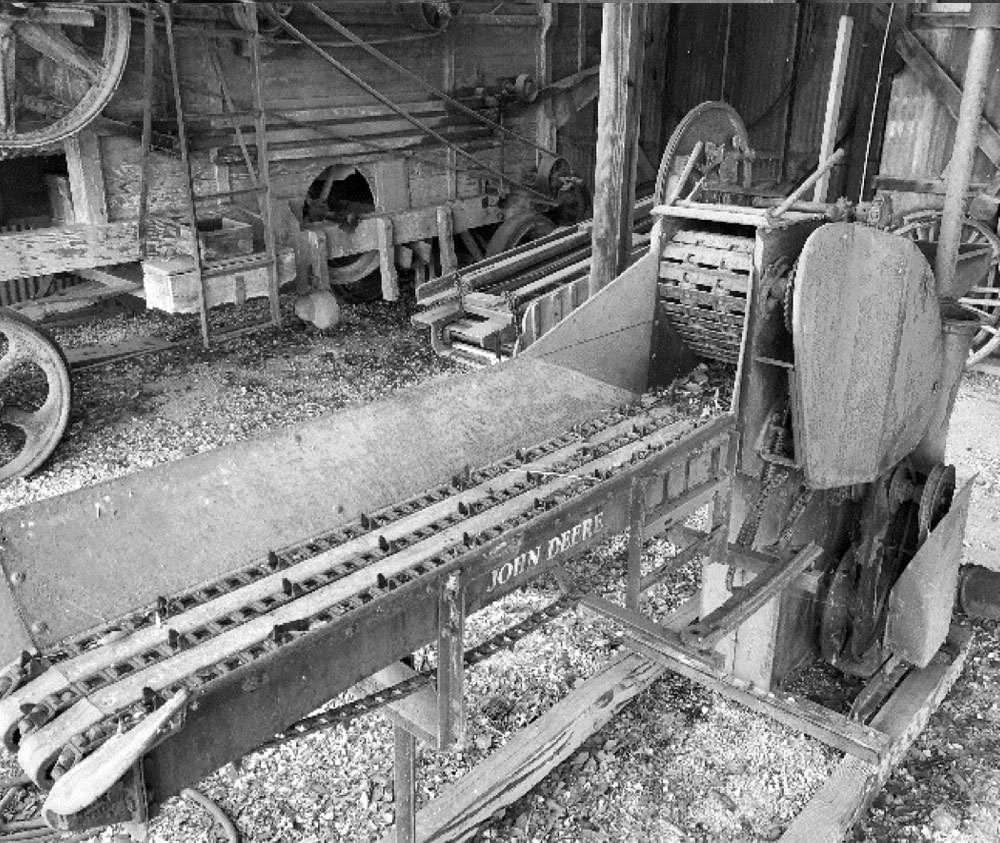
ROUGHAGE GRINDER
This machine was used to produce feed for animals, usually cattle. Grain and hay were shoveled into the machine which ground them into a high protein mix. The output was sacked and stored, then used to feed the animals.
More on ROUGHAGE GRINDERS!
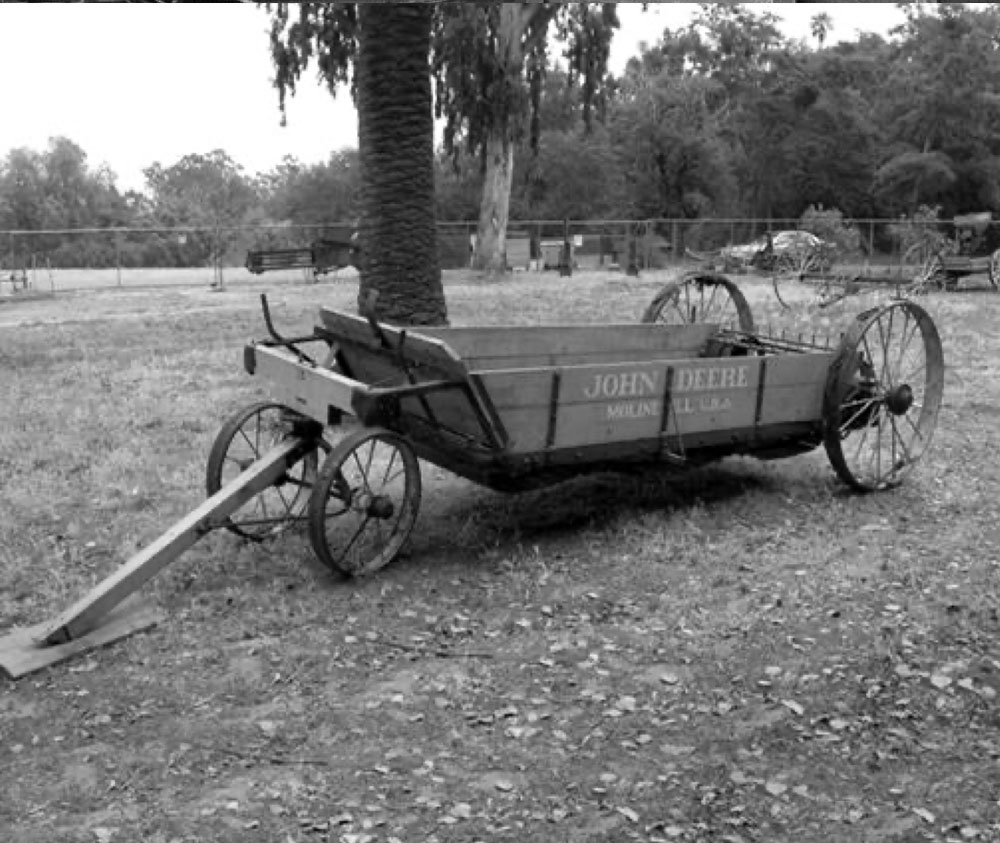
MANURE SPREADESR
Because manure spreaders were used in the fall, manure was able to soak into the soil during the rainy season. Spreaders allowed farmers to fertilize the soil with the year’s accumulated animal waste. This recycling process returned soil nutrients to the land which otherwise would be lost. Modern farms often use commercial fertilizer instead of animal waste, thus depriving the soil of some of the benefits of recycling the waste.
More on MANURE SPREADERS!
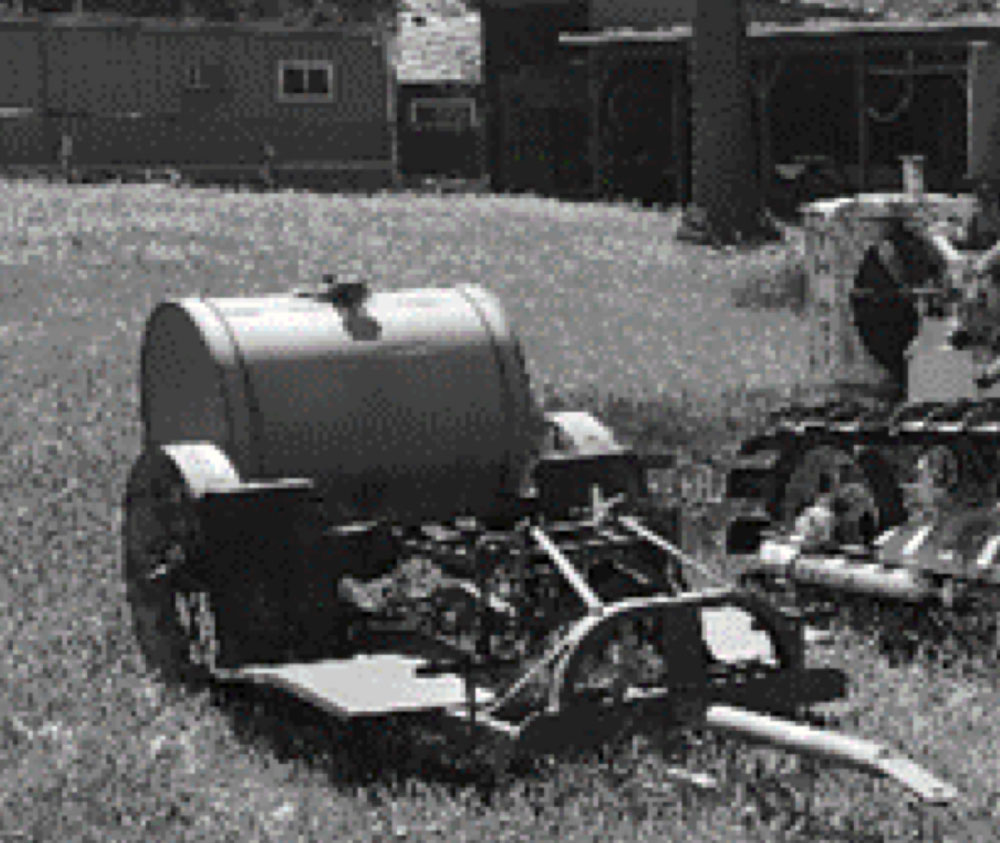
GEM SEED PLANTER
These seed sowers were used to distribute seed evenly into the tilled soil. They were able to distribute the seed evenly in straight rows, which made harvesting much easier.
More on SEEDERS AND PLANTERS!
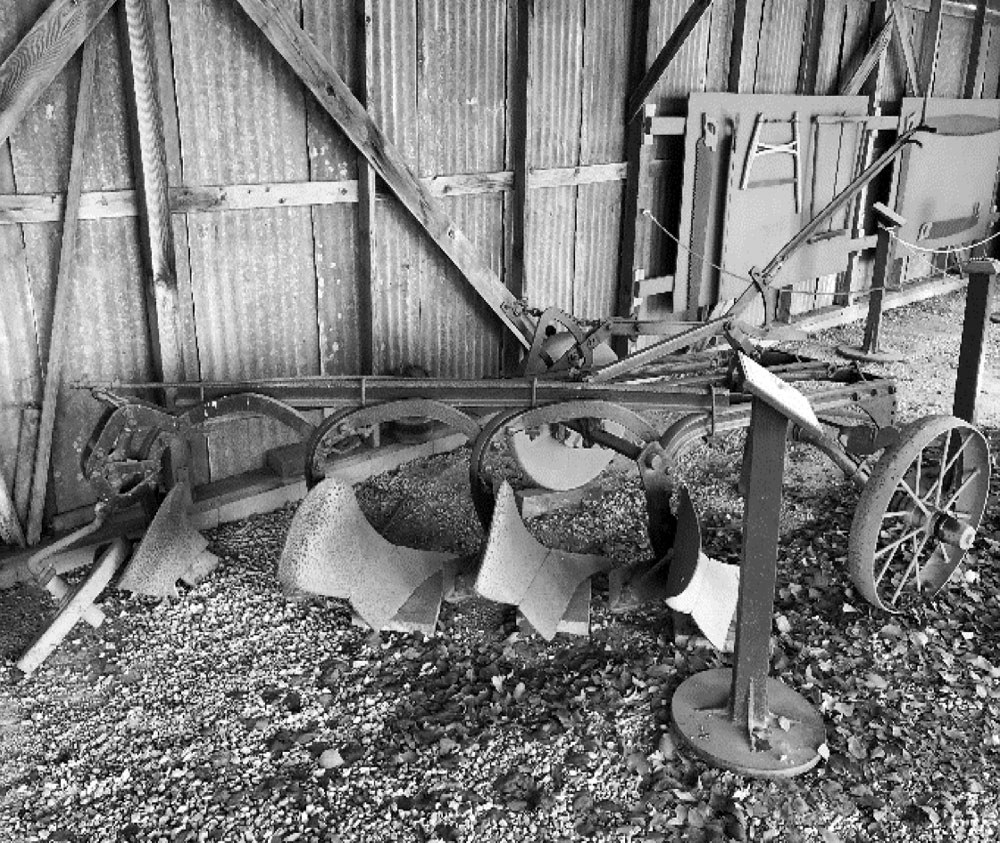
ADDITIONAL PLOWS
An assortment of various plows including a single bottom plow, a hillside plow, a gang plow, and a multiple bottom plow.
More on PLOWS!
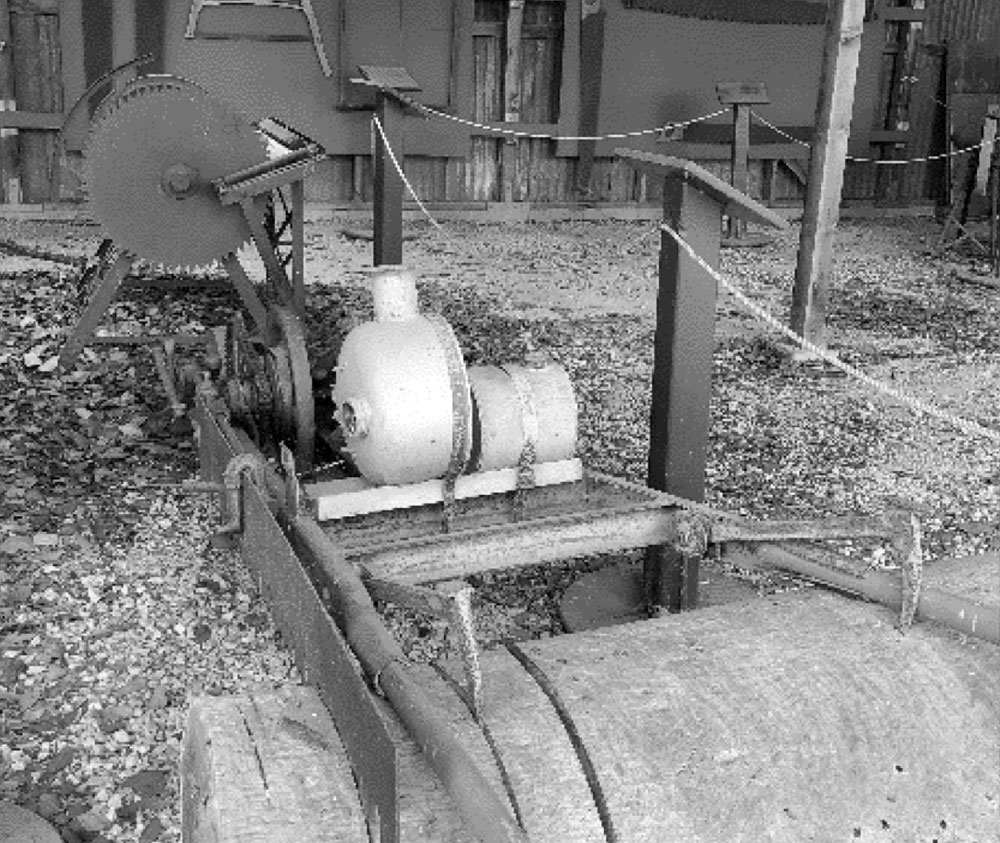
SAWS
An assortment of saws, including drag saws which were used to clear fields and could be taken into the field to cut trees and logs. There is also a left-handed belt driven table saw for cutting wood for various uses. There are a number of hand saws as well as a saw filing machine, used to sharpen the saws.
More on SAWS!
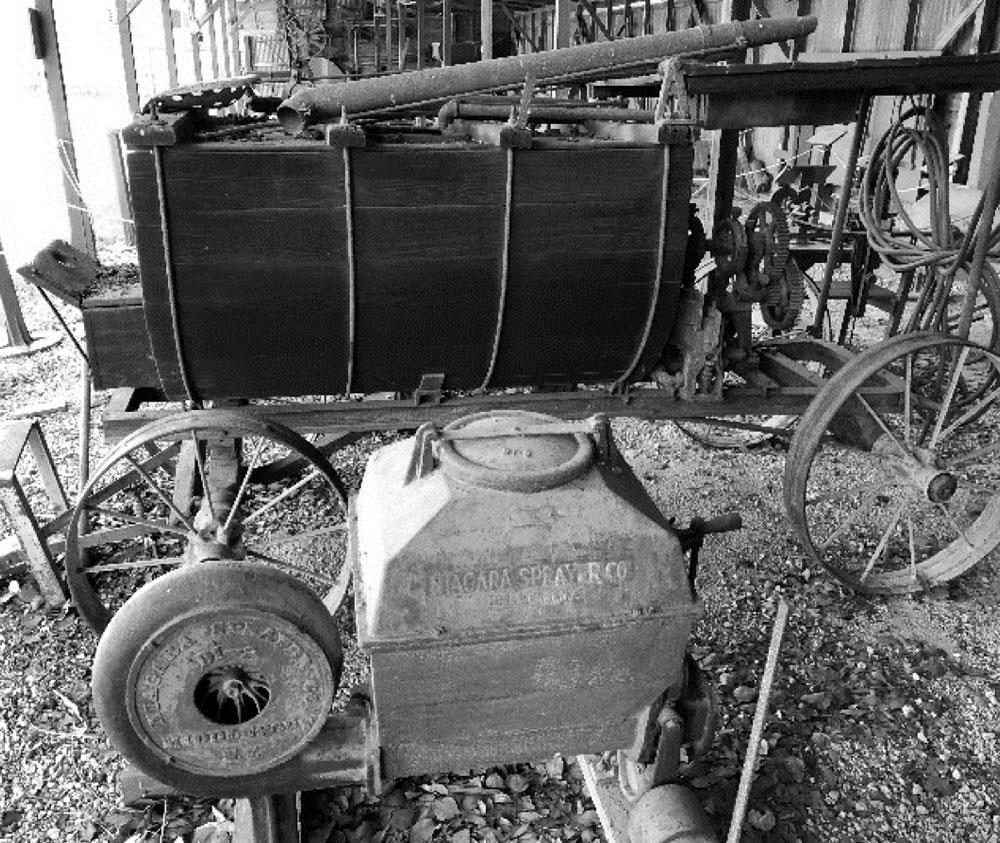
SPRAYERS

WALNUT HULLERS
The Maiers Huller was produced in Goleta and patented in 1903. There are two small hullers and one larger huller. The hullers could do the work of at least 35 men hulling (removing the outer covering from a fruit, seed or grain) by hand. There is also a huller made by Grace Bros.
More on WALNUT HULLERS!
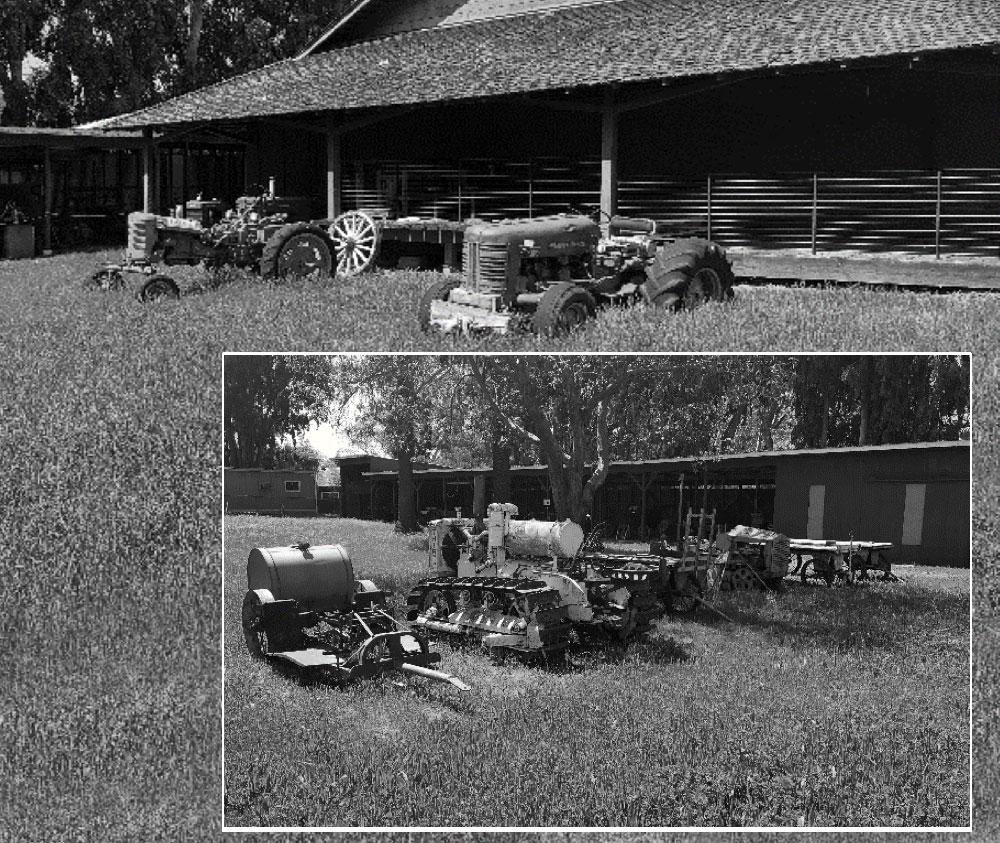
WAGONS AND TRACTORS
Throughout the yard are several tractors and wagons on display. These were used throughout the farm for a variety of hauling and other heavy work.
More on WAGONS AND TRACTORS!
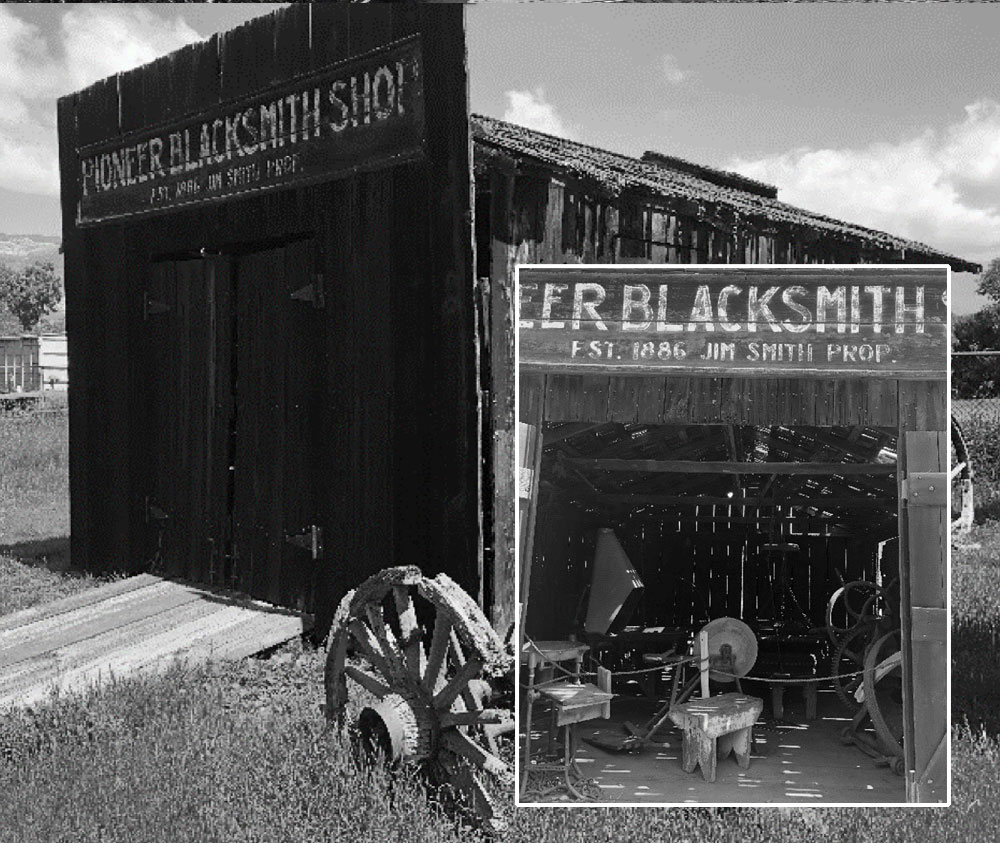
BLACKSMITH SHOP
The Pioneer Blacksmith shop, where tools were made, and equipment was repaired.
More on BLACKSMITH SHOPS!
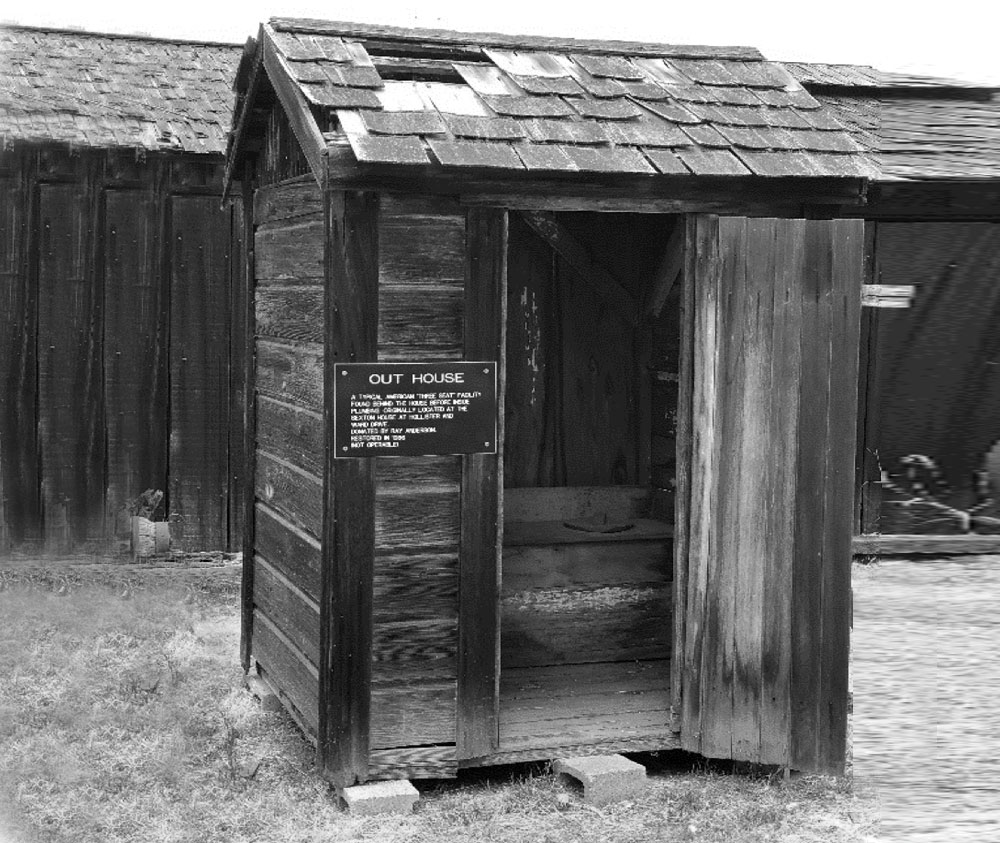
THE OUTHOUSE
Prior to indoor plumbing the entire ranch would use the outhouse for their toilet.
More on OUTHOUSES!
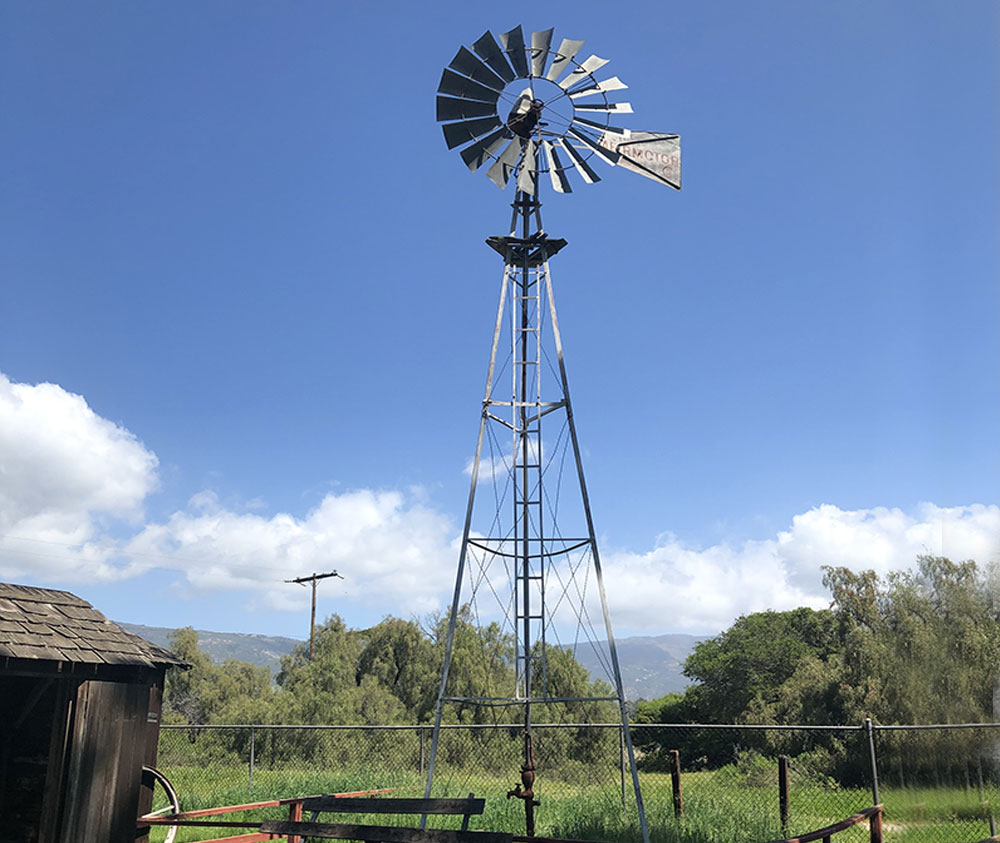
WINDMILL
A windmill made by the Aermotor Co. Windmills were used to pump ground water and pipe it through an irrigation system to the crops.
More on WINDMILLS!
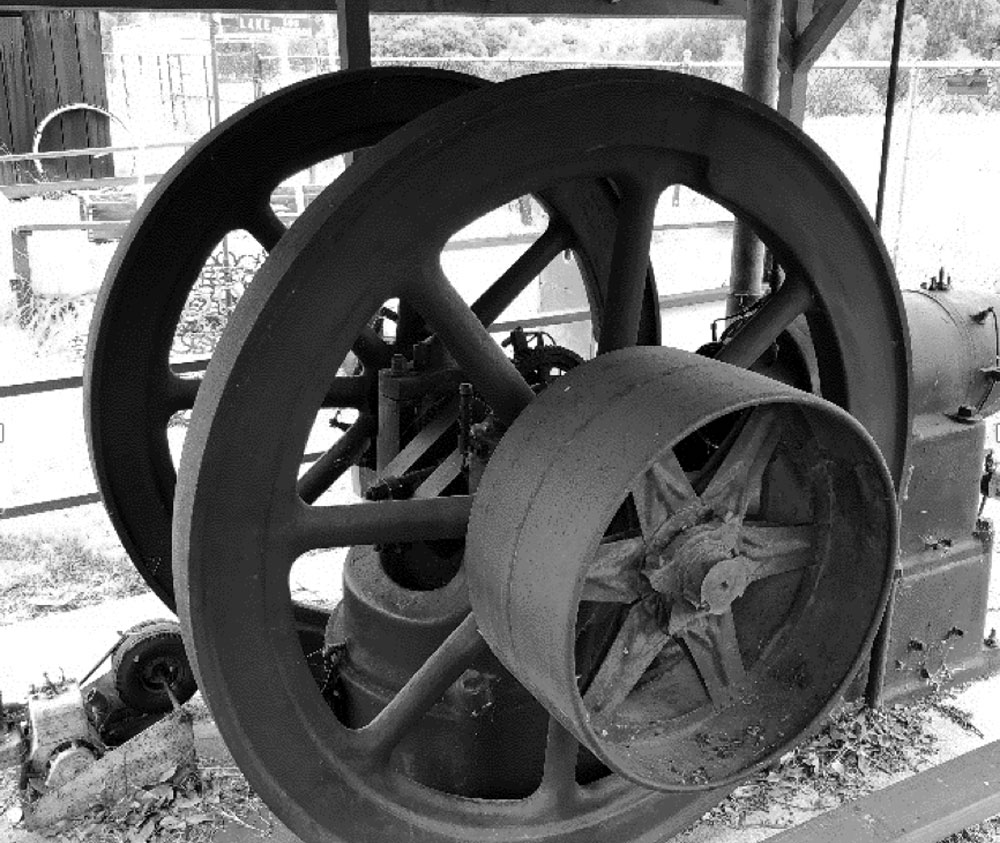
ONE LUNG ENGINE
One lung engines were farm powerhouses in the 1880s. ... When they slowed down, they would cause a spark that would fire the engine up again. They could run all day on a quart of gasoline and were used for everything from cutting wood to making ice cream.
More on ONE LUNG ENGINES!
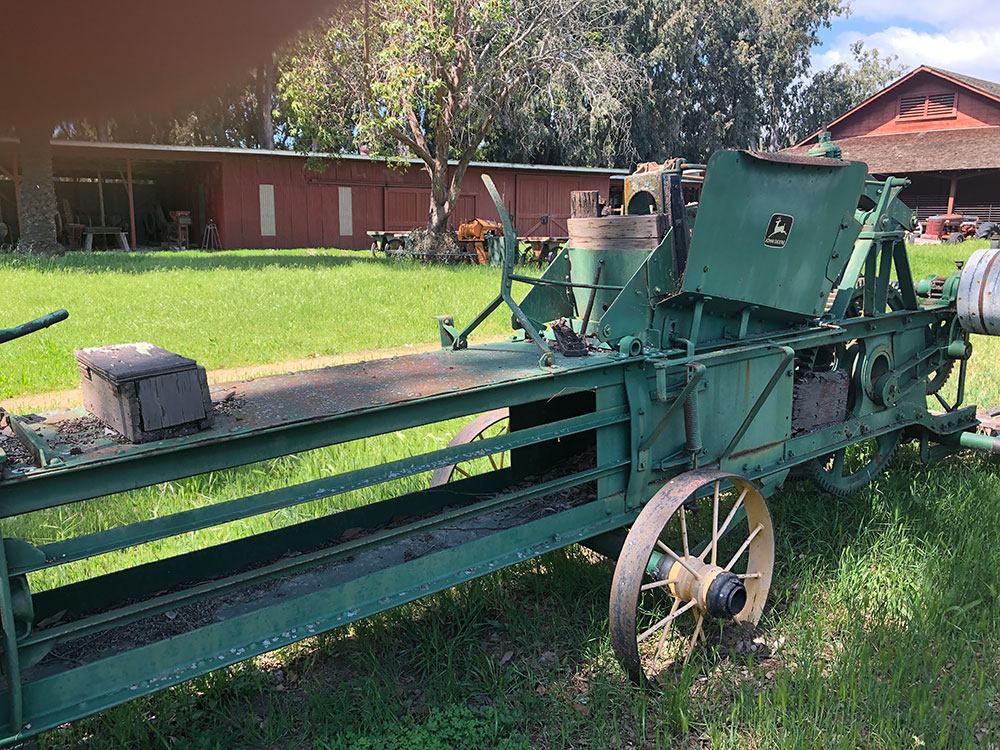
HAY PRESS
The hay press squeezed loose hay into a package that could by tied, handled and transported. Until the mid-1800s, though, hay that was harvested for livestock was simply piled into stacks or moved into the barn for use during the winter. Moving the crop involved pitching it onto a wagon and pitching it back off at the destination.
More on HAY PRESSES!
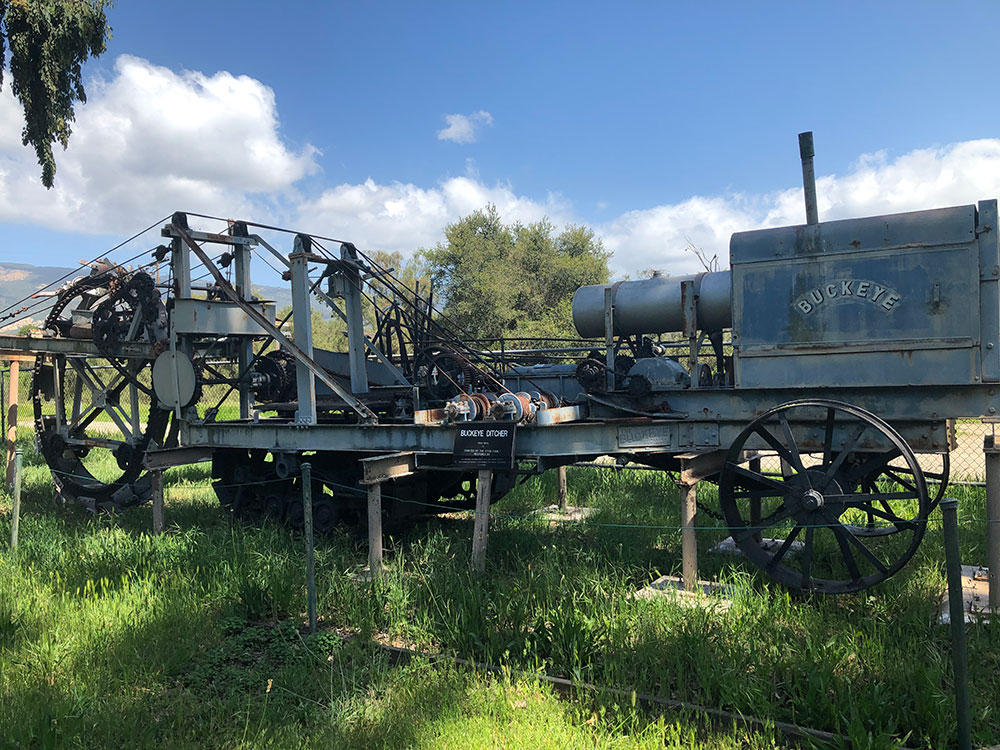
DITCHER
The Stow Family’s Buckeye ditcher from the 1920s was used to dig ditches for planting and laying irrigation pipes.
More on DITCHERS!

SMUDGE POTS
Smudge pots were placed in the fields near the lemon trees to keep them warm on nights when the temperature would dip too low for the trees and fruit. Now most ranchers use gas-powered wind machines to drive up the temperatures on cold nights.
More on SMUDGE POTS!

BRANDING
Branding was a way to exhibit ownership of cattle and other livestock. Owners created their own consistent visual mark for their “brand” using letters, numbers and symbols. Brands can be “read” from left to right, according to a branding “language.”
More on BRANDING!